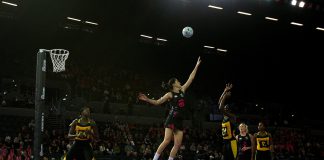It’s a confronting, uncomfortable question, but given our location in the East Coast Bays with so many beaches at our doorstep, it’s an important one.
The Water Safety New Zealand national standard for swimming is 200m. That’s four lengths of the 50 metre pool at the National Aquatic Centre. To put it in a local context, if your child enjoys jumping off the Murrays Bay wharf over summer, it’s the approximate distance from the end of the wharf back to the shore at high tide.
200m is a critical milestone for a young swimmer. It’s a widely recognised distance for being able to save yourself in most forms of water – to swim to the side of a pool, to the edge of a river, or sideways out of a rip before returning to shore. It’s also a marker in Surf Lifesaving, where young nippers work towards their 200m safety badge.
With summer approaching, and the beach getting more tempting, it’s time to assess if your child is competent enough to have fun and be safe. They may love the water or have ‘clocked’ swimming lessons, but do they swim regularly enough to maintain their skills? Would they be able to get themselves out of trouble?
Swimming skills vs swimming fitness
So, your child can swim 200m when they’re fresh and full of energy. Could they do it when fatigue has set in? Could they keep pulling themselves up on to a pontoon at one of our local beaches after a day in the water?
When assessing your child’s water competence, don’t just tick the box if they swim 200m once in flat water. Encourage them to try it under different conditions – attempt it following an hour in the pool, take them to the beach and see how they go in the open water, with waves to contend with, with goggles and without. As their guardian, you need to be confident that they can swim 200m whenever they need to, not just when they’re at full strength.
Active supervision
No matter the age of your kids, or their confidence in the water, if they’re young enough to need someone to take them to the beach, they’re young enough to need active supervision. This doesn’t necessarily mean you need to be in the water with the child, but it does mean you need to be watching them. Don’t get carried away chatting to friends, or caught up in a book in the sun. Your child could need you to assist them whether they’re in the shallows, floating on a blow up device, or out beyond their depth.
Our AUT Millennium swim teachers regularly assess students and their competency in the water. If you’d like to know where your child’s skills are in relation to the 200m milestone, have a chat to the Deck Supervisor on your lesson day.






































